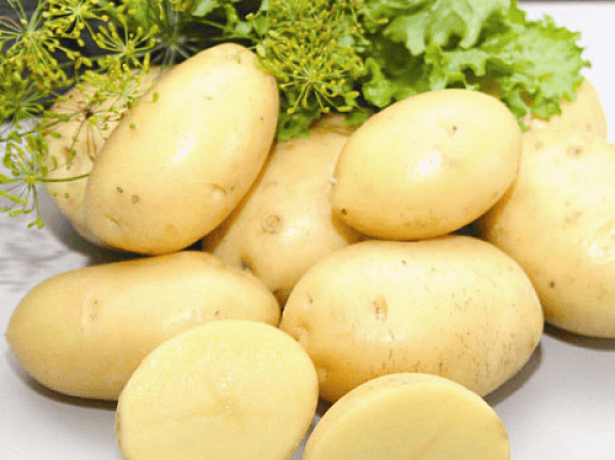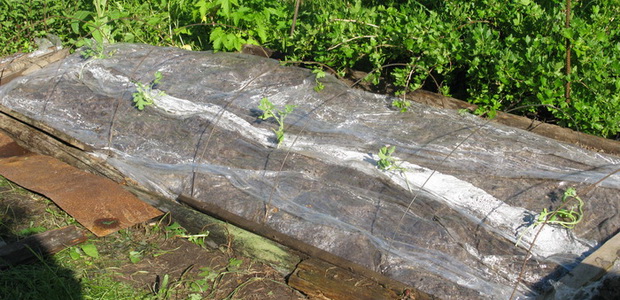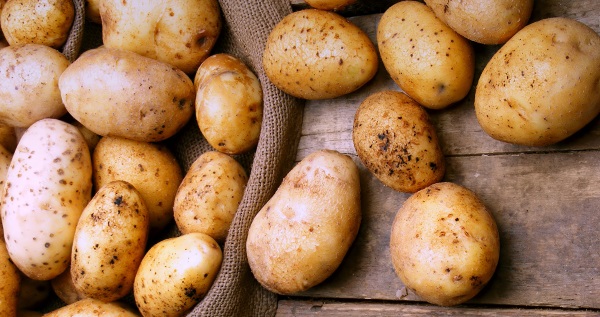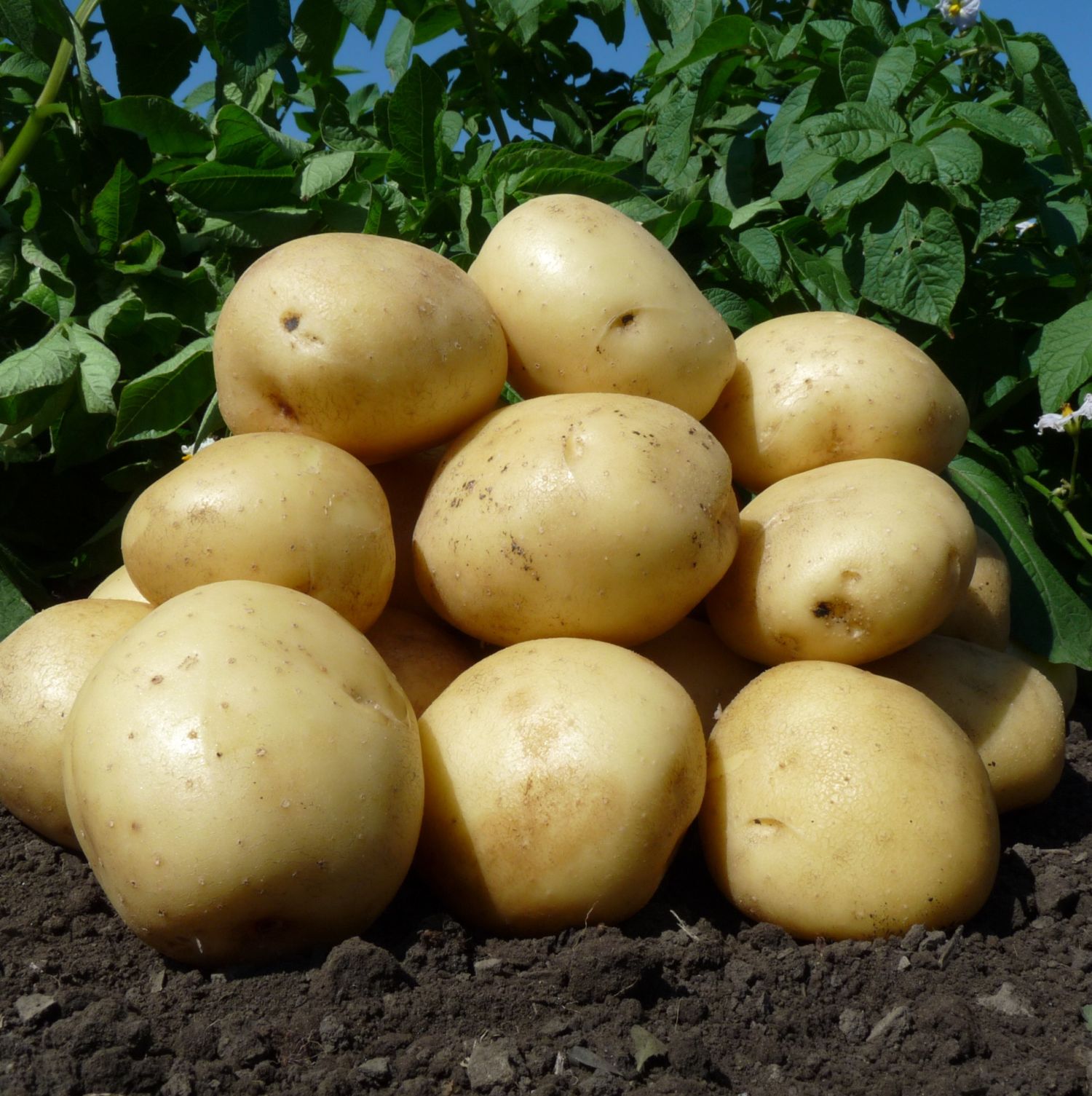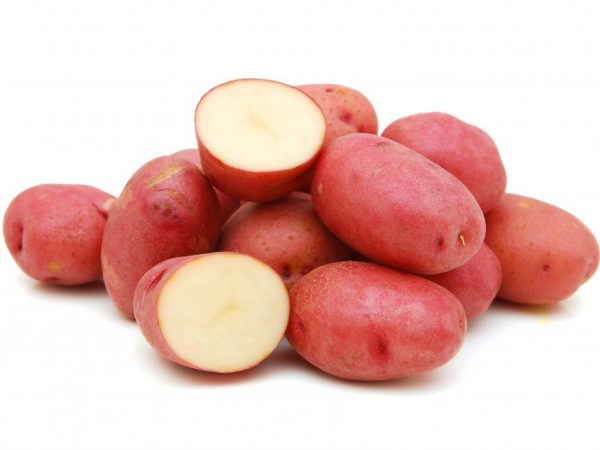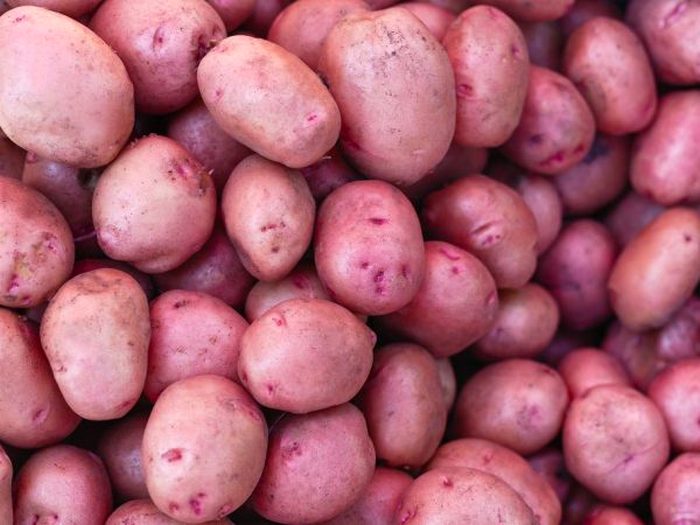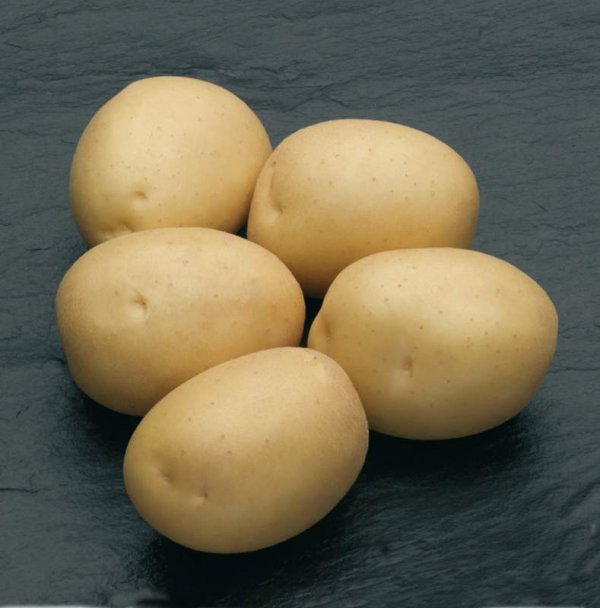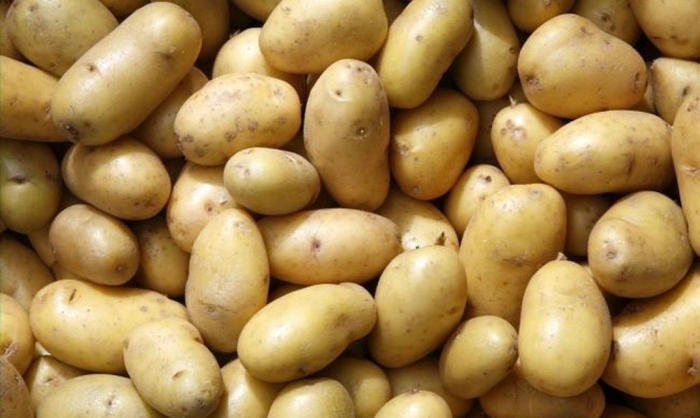Content:
Nandina potatoes ripen very early. This variety is a type of table potato. The growing season of the variety takes 40-45 days, subject to planting germinated potatoes. Therefore, potatoes can be attributed to an early crop in terms of ripening rate. Choosing this variety is the perfect solution to start the season. The crop belongs to varieties with a reduced need for nitrogen, therefore fertilizers do not have a decisive effect on the growth of tubers.
Description of the variety
The Nandina potato is described as a semi-erect plant. The tuber with a yellow color of the flesh and skin, is a large semi-oval. Its surface is covered with medium-sized eyes.
The variety was entered in the register of the Russian Federation in 2015. The culture is suitable for growing in the Central, Volgo-Vyatka and North Caucasian regions. In terms of taste, the potatoes grown in the northern part of Russia are superior to the southern ones. Nandina at the time of ripening contains up to 15% starch in fruits.
Characteristics of the variety
Frost resistance
Nadina's potato is a cold-sensitive plant. Frosts below -4 Celsius can damage the tops and kill the tubers. During freezing temperatures below zero, ice crystals form in the tubers, which destroy cells. The frozen potatoes will soon start to rot. Therefore, it is important to land Nandina after the frost has passed.
Yield
The yield of the variety is very high - from one hundred square meters you can get up to 330 kilograms of potatoes. Commodity characteristics - 77-93%. Keeping quality parameters - 93%.
Bloom
The buds of Nandina's potatoes correspond to the following description: light red-purple, large. Corolla reaches medium size at the time of flowering. The budding period begins closer to mid-May.
Plant size
The plant reaches medium height, with large leaves on strong tops. The mass of a varietal tuber can reach 70-130 grams, depending on the intensity of watering and the time of harvest.
Agricultural technology of cultivation
Soil for tubers
Some gardeners use ash and urea to control the Colorado potato beetle. These substances are added to the soil before potatoes are planted. Dilute urea in a ratio of 1 tablespoon to 10 liters of water. However, late blight poses a much greater threat to Nandine.
The plot of land should be prepared in the fall. Loose and nutritious soil is the key to a large harvest.
Landing feature
Large tubers with uniformly germinated eyes are selected for planting. By weight, the planting material should be approximately 50-80 grams. Before planting, it must be poured into boxes and placed in a dry, lighted room. It is necessary to periodically turn the boxes so that the sprouts are distributed evenly throughout the potato. These tubers will yield a good harvest if carefully cared for.
Boarding time
Boarding time is May. It is best to plant at the beginning of the month. However, if there is still frost outside, then planting can be done at the end of May.It is better to plant Nandina with sprouted tubers or seedlings to a depth of 20 centimeters. If the soil is dry, you can plant the plant deeper.
Planting must be done at a distance of 30-40 cm between the tubers. This is an important condition for full ripening, since a large number of tubers are formed in one nest. You need to maintain a distance of 70-80 centimeters between the rows.
Care
For a rich harvest, it is recommended to spray the crop against late blight. Regular desiccation will help increase the strength of the peel. This is necessary in order to carry out the harvest on time and dig up large potato tubers. Desiccation is as follows: the tops are sprayed with chemicals, the leaves begin to dry out, and all the nutrients go to the roots, that is, to the potatoes. This stimulates the growth of tubers, and the composition of the potato is saturated with essential minerals. This procedure must be carried out before harvesting.
Watering
Only after the sprouts appear from the planted tubers, the first watering can be done. When the stems have already developed from the sprouts, a second irrigation can be done. The appearance of buds is a sign for the gardener to water the crop for the third time. During this period, the plant begins to bloom and the tops are fully formed. It is imperative to water Nandina during this period, as this is the main stage in the growth of the culture. It is at this time that starch is formed in the tubers.
At the time of flowering potatoes, the tops must be covered with moist soil from below. After the potatoes have been hilled, new potato ovaries form inside the filled mound. For this, the gardener will need a hoe. It is better to huddle the tops before or after noon.
Advantages and disadvantages of the variety
Benefits
- Potatoes ripen in 40-45 days, which means that the crop from Nandina can be harvested three to four times per season;
- The Nandina variety is resistant to diseases such as cancer, golden potato nematode, wrinkled banded mosaic and leaf curling;
- Nandina is an early variety, already in the middle of summer you can enjoy young potatoes;
- Potatoes have a high yield and do not require special care;
- The rind and flesh do not darken after cooking. The color remains golden yellowish;
- Good keeping quality. This is excellent quality for table potatoes. A gardener preparing supplies for the winter will find Nandina the perfect pantry variety.
disadvantages
- The culture is susceptible to late blight. However, disease and death of tubers can be avoided by spraying the plants with chemicals in time;
- Nandina, unlike Red Fantasy, Roxana and Razlind, is not suitable for trade, since it does not have such high culinary properties. Other varieties are much more pleasant in taste, but they also require a more complex approach to agricultural technology;
- The keeping quality index applies only to fully ripe tubers. Root crops that are only sprouting should be handled with care and stored in a dry room until planting.
Planting Nandina potatoes is an ideal solution for gardeners planning to harvest three to four crops per season. The tubers are large, rich in flavor and high in starch. These are the characteristic features of the variety. It is worth remembering that early varieties require special care. Correct and timely watering can provide the gardener with a harvest of up to 330 kilograms from one hundred square meters. However, the variety does not require tireless maintenance, unlike other crops, it is unpretentious to soil and moisture.
